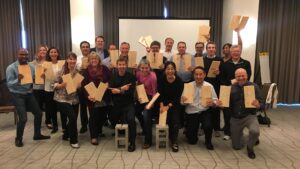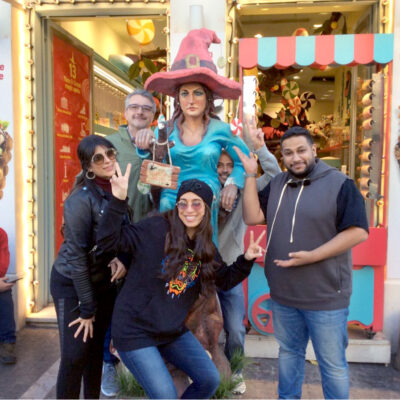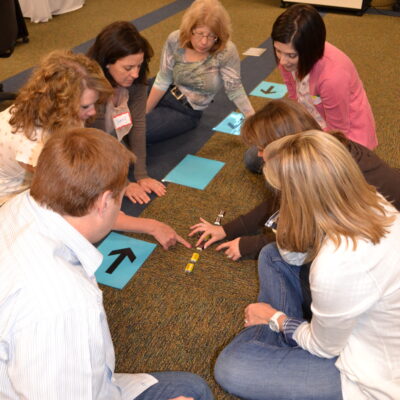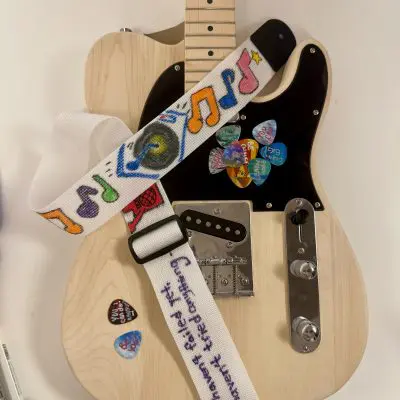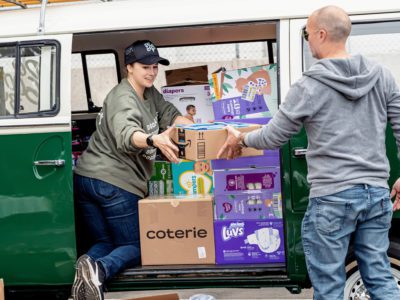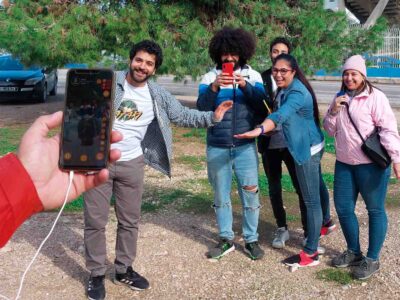Learning is a never-ending journey. Every day—at work and in our daily lives—we are itching to gain new knowledge, and businesses that play on this desire put themselves at an advantage. With the power of shared experiences and shared learning, you can create stronger and more cohesive teams. While many think of team bonding as something just for fun, it is incredibly important when it comes to creating effective and productive teams that are continually gaining new skills and expanding their abilities.
These shared experiences not only help employees grow, but they also create strong bonds among employees that can bolster teamwork, collaboration, communication, trust, and much more. So today, let’s take a closer look at bonding through shared learning experiences, its benefits, what options are available, and how to implement them into your workplace.
The Power of Shared Experiences
To start, let’s look at the power of sharing experiences. There’s more to it than you might think, so we’ll go as deep as possible. Psychologically, there are a lot of benefits. As humans, we want to bond with others, share experiences with those around us, and feel like we’re part of a greater whole. Shared learning accomplishes that by letting people bond over learning.
This can help increase empathy, collaboration, and trust. As you bond through shared experience, you learn about who they are, their strengths and weaknesses, and how they deal with roadblocks—all of which result in stronger bonds. Statistics support this as well. According to Degreed, employees at companies with healthy learning cultures are 147% more likely to connect with peers who want or have similar skills in a company. Learning brings your employees together, making them more cohesive.
But why does that matter? Teamwork starts with great relationships. The most effective teams are those with strong bonds and healthy relationships. These bonds can propel teams toward success, ultimately helping your business.
Types of Shared Learning Experiences
Now that you know the benefits, let’s look at the different types of shared learning experiences. Experience sharing comes in many shapes and sizes, and it’s important to know what options are available to you. So here are four types of shared experiences:
Team-Building Activities
First up are team building activities. These experiences are all about encouraging teams to better collaborate and cooperate through employee bonding. This includes things like outdoor challenges, escape rooms, collaborative projects, and more. While these may just seem like ways to let off steam, fun and gamification in the workplace fosters employee development.
An example of this type of shared experience is the High Tech Scavenger Hunt. This event has your team working together to complete a scavenger with the power of technology, improving teamwork, collaboration, problem solving, and leadership. In It to Win It is another example. With a focus on friendly competition, teams bond while competing in a series of 60-second challenges, putting an emphasis on bonding, morale, and motivation.
Volunteer Work
Another option available for shared learning is volunteer work. Giving back to the community not only helps those around you, but it can help teams bond over an impactful and meaningful shared experience. It’s no secret that volunteering as a team helps not only people in need, but the people volunteering as well. It brings people together, provides a sense of community, and helps create a more positive and healthy culture at work.
Our Charity Bike Build is a perfect example. In this program, teams build and decorate bikes for kids in need. Teams get to volunteer and make a difference in their community while learning more about each other, making it an incredible bonding experience. And that’s just one example. There are many charity team building programs to choose from, so there’s something for every team regardless of their interests or specific charitable preferences.
Workshops and Training Sessions
If you want to focus more precisely on shared learnings, then workshops and training sessions might be a great fit for you. Workshops and trainings let employees hone in on key skills while also engaging in team bonding, resulting in stronger and more connected teams.
Breaking Barriers is a good example. This event prioritizes breaking barriers by learning more about yourself, your strengths, weaknesses, fears, and that of those around you—helping you and your team better overcome future obstacles. Emotional intelligence is also key to strong teams, and DiSC training can help your teams better their understanding of themselves and their coworkers. And of course, that’s coupled with the shared experience of undergoing training together.
Cross-Functional Projects
Last but not least are cross-functional projects. These are incredibly impactful yet often overlooked shared learnings that can be an incredible asset to businesses looking to strengthen their teams. Having teams from various departments work together on projects helps cultivate a sense of unity. Instead of various teams holed up in their silos, they are all parts of the same business. This sense of unity and community can be very powerful.
They also help instill shared goals. Again, your teams are all part of the same business with the same goals. By joining up for shared projects across departments, teams can get a greater sense of their shared goals, which helps promote unity and collaboration. On top of that, cross-functional projects encourage team members to learn skills outside of their comfort zone. This creates more flexibility and adaptability for employees and the business, as well as helping employees see how they fit into the grand scheme of things.
Bonding Experiences Key Pillars
Before you start implementing experience sharing on your own, there are a few more things to cover. Each one of the shared experiences above promotes one or more of the key pillars of bonding experiences: trust, understanding, and collaboration.
Trust
Trust among employees and between the employee and the company is essential. Without trust, employees are reluctant to collaborate, less likely to share ideas, and more likely to question leadership decisions and intent. Thankfully, shared learning is one of the most effective ways to build trust. By working together to overcome challenges, learn, and compete in events, employees foster bonds that result in higher levels of trust.
Jared Kleinert highlighted the impact that team building can have on trust in the workplace in a podcast episode about corporate offsites, saying:
“Getting everyone together in person and building those deep, meaningful connections among the workforce creates trust and intimacy, allows you to have friends at work and makes you want to stay at the company during harder moments.”
It may seem simple and rudimentary, but it’s important not to underestimate the value of trust in the workplace.
Understanding
The next pillar is understanding. Primarily, this means understanding yourself and those around you. Understanding yourself and your coworkers results in strong bonds, more efficient collaboration, and more effective use of your own skills.
It might not always be easy, but people of various ages from various backgrounds can come together and relate to each other over shared learning and experiences. Whether they be team building, workshops, or volunteering, shared experiences foster understanding. That said, leadership also plays a role here. People-oriented leaders can encourage a culture of understanding through people putting first and leading by example.
Collaboration
The final pillar is collaboration. Collaboration is absolutely key for teams, as they need to be able to work together effectively to accomplish their shared goals. However, collaboration is often stunted by silos.
With shared experiences, employees who would typically be siloed off from each other can come together and break down those walls. In turn, collaboration can be greatly boosted which makes teams more cohesive and efficient. This makes shared learning one of the best ways to improve cooperation amongst coworkers and bring your teams together.
Planning Successful Employee Bonding Experiences
Now, the question becomes, “How do I successfully plan and implement employee bonding experiences?” But don’t worry; we’re going to provide a short step-by-step guide to help you through the process.
Define purpose and budget. The first thing you need to do is figure out what you want to accomplish and how much you want to spend. This helps you narrow down your options and choose the best experience for your goals.
Choose a date, time, and location. Next, you need to figure out where and when you want the shared experience to take place. This is a simple step, but it’s essential to planning a successful shared experience.
Plan activities. With all that established, now you need to plan activities. This means figuring out what event(s) you want, any speakers or seminars, fun activities, and more. It’s important to have a well-thought-out plan.
Arrange transportation and food (if needed). If your event is going to be all day or at a location other than the office, you need to arrange for food and transportation.
Communicate details to employees. After the planning is all done, you need to communicate all the essential details to employees. Keeping them in the loop helps get them on board and excited about the experience.
Collect feedback afterward. When it’s all over, you need to collect feedback. This helps you get a better idea of what employees did and didn’t like and how effective the event was. This will help you improve for future events.
Level Up Your Teams With Shared Learning
Cohesive teams perform at a higher level than those who are disconnected from each other, and one of the simplest ways to bring teams together is through shared experiences. Fun, effective, and impactful, shared experiences increase team cohesion while building an inclusive and understanding work culture that can drive success.
Facilitating learning experiences can be stressful and time-consuming, which is why TeamBonding is an incredible resource for leaders looking to unite teams with shared experiences. Through our own experience, we’ve learned how to best implement and facilitate team bonding experiences that are highly impactful and effective. You can rest assured knowing that your shared learning event will be a success, all while freeing you up to join in on the fun.
We have many different events that help teams bond over shared experiences, so get in touch with us today and level up your teams with shared learning.


